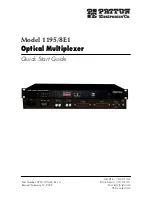
Operational Guide
46
Steps To Optimize
Steps to optimize measurement using an EC probe:
1. Determine what measurement you wish to make with the EC probe.
2. Determine if Standard or Basic mode is best for your measurement.
3. Connect the Probe and configure your measurement using the SETUP
menu.
4. Calibrate the EC probe.
5. Take measurements using a EC probe.
Measurements Available With The EC Probe
The four-ring EC probe may be used for 3 different measurement applications
with edge™.
•
It may be used for temperature compensated or absolute conductivity
measurements (with units of μS/cm or mS/cm).
•
TDS (Total Dissolved Solids) measurements (a calculated measurement
derived from the ionized particles in a sample and the conductivity
measurement. This has measurement units of mg/L, ppm or g/L).
•
Salinity: 3 different seawater salinity scales are supported; Practical
Salinity (PSU), the Natural Seawater Scales (g/L), and the % NaCl (not
available in basic mode).
The RANGE key is used to change from conductivity to TDS to Salinity
(standard mode only).
Basic Versus Standard EC Mode
Standard operation mode allows complete configuration of all parameters
for the measurement of Conductivity, TDS or Salinity measurements.
Measurement data can be logged using Manual log on demand, Manual Log
on Stability or Interval logs. All logged data can be exported to a thumb drive
or PC. Basic operation mode is used for conductivity and TDS measurements.
Common default values are used for Cell Factor (C.F.), temperature
compensation coefficient and TDS conversion factor. Measurement units are
user selectable for TDS. The meter uses continuous auto-ranging to simplify
the measurement experience.
Basic vs
Standard
EC mode
Summary of Contents for Edge
Page 1: ...Instruction Manual Multiparameter Benchtop Meter ...
Page 92: ...Warranty 92 Notes ...
Page 93: ...Warranty 93 Notes ...
Page 94: ...Warranty 94 Notes ...
Page 95: ...Warranty 95 Notes ...
















































